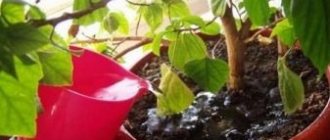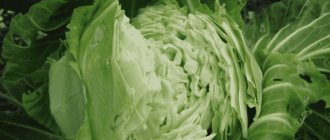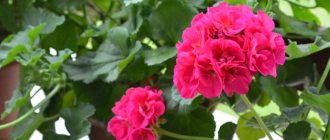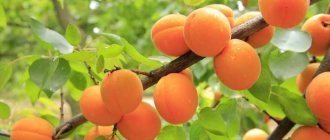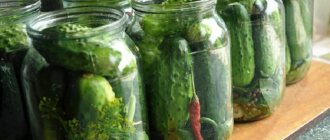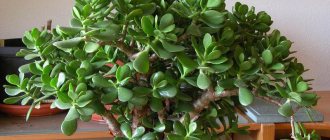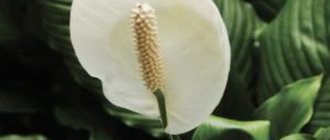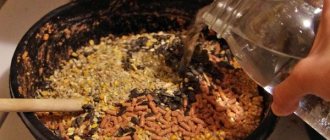Hibiscus rosa-sinensis with glossy dark emerald leaves and large double flowers, most often scarlet in color, is a living decoration of offices, restaurants, cafes, and public halls. Many housewives also fall in love with hibiscus - they are happy to grow a beautifully flowering ornamental tree at home. Experienced flower growers claim that Chinese hibiscus is an unpretentious indoor plant; provided optimal growing and nutritional conditions are provided, it pleases owners for a long time with beautiful flowers and rich foliage.
In contrast to their statements are the complaints of some amateur flower growers. On many thematic forums, you periodically “hear” their questions and requests: why doesn’t hibiscus bloom, what am I doing wrong, help with advice. An obvious fact: with its flowers, the Chinese rose thanks its owners for proper, balanced care. Sometimes excess care turns into a scourge for a houseplant and can lead to its death or improper development. Growing conditions that are too “good” (in your opinion) will provoke active growth of the tree - you can’t take your eyes off the green foliage with an emerald tint, but waiting for the buds to appear is in vain.
What's the matter?
The reason for the cessation of flowering of hibiscus can be any imbalance:
- direct sunlight or lack of light;
- overmoistening of the soil or too infrequent watering;
- soil poor in nutrients or excess fertilizer;
- a cramped pot or a tub that is too spacious;
- a sharp drop in temperature or sweltering summer heat.
How to determine what exactly the plant is not happy with? How can I get it to stop rebelling and be covered in beautiful red flowers every season? First of all, it is necessary to determine the optimal conditions for hibiscus flowering and ensure them as much as possible. If you want to wait for double roses as soon as possible, and you are very upset that the hibiscus does not bloom, analyze your mistakes in care and hurry to correct them.
Correct landing: in tight spaces, but don’t be offended
Hibiscus is picky about soil; a fertile, loose soil mixture with neutral acidity is excellent for the growth and development of the tree. It is desirable that the mixture include clay turf, humus, and charcoal chips. Do not forget about the drainage layer (expanded clay can be used).
If your tree is still very small, you need to be prepared for frequent transplants, choosing a larger pot (tub) each time. There is no need to replant an adult hibiscus every season, but in order for it not to stop flowering, it is worth removing the top layer of soil in the tub and adding a nutritious soil mixture.
Immediately planting a young plant in a large container “for growth” is a typical mistake of novice gardeners. Important: transplanting into a beautiful, roomy tub may be one of the reasons why the hibiscus has stopped blooming! Yes, the tree pleases with the rapid growth of green mass, the leaves sparkle and have a uniform green color. It seems that clusters of buds are about to appear, but this does not happen. The explanation is very simple: the roots of the hibiscus must “hug” and master the entire lump of earth. What need to do? Wait or transplant the hibiscus into a smaller pot.
Hibiscus also wants to eat: water and feed roses correctly
In order for hibiscus to bloom regularly and luxuriantly, it is necessary to pay due attention to the procedure for watering and feeding it. Too much moisture at low temperatures in the room can cause root rot. At best, the hibiscus will drop its flowers and buds. If the situation is not corrected in time, the leaves turn yellow and fall off, the plant gets sick and dies. The Chinese rose gets rid of flower buds even if there is insufficient moisture or nutrients.
5 basic watering rules for those whose hibiscus does not bloom
- In winter, you should not water hibiscus often and allow water to stagnate.
- Do not skimp on moisture in hot weather, but do not re-water the flower until the top layer of soil dries out.
- In addition to watering in hot weather, it is highly recommended to spray hibiscus leaves daily and place containers of water nearby to increase air humidity.
- It is advisable to leave tap water for several hours; the plant responds well to watering with soft water.
- The optimal temperature is 25-30˚С.
Hibiscus may not bloom due to “hunger” or poor nutrition. During the period of active growth (March - September), it is advisable to feed roses weekly, during the rest period (October - February) - no more than once a month. Experienced gardeners recommend using a complex mineral fertilizer designed specifically for beautifully flowering plants. Periodically, you can use a weak solution of organic fertilizers for watering.
Timely feeding and watering still do not exclude the possibility that the hibiscus will not want to bloom. The reason may lie in the incorrect choice of “food”. An excess of nitrogen fertilizers only contributes to the active growth of the crown and the rich color of the leaves, but not to the formation of buds. But phosphate ones are the most effective companions in the fight for beautifully flowering home hibiscus; they will make it bloom. Of course, if other conditions for keeping the rose are optimal.
How to make hibiscus bloom
We have already figured out the reasons for the lack of flowering. Now you need to figure out how to make hibiscus bloom at home. This amazing and incredibly beautiful flower is undemanding in care.
The basic rules for caring for and maintaining hibiscus at home include:
- location of the flowerpot. This can be the south, southeast or east side with shading at midday, when the sun's rays are most active;
- pot and suitable substrate. When choosing a flower pot, do not take containers that are too large. The ideal soil is a neutral acidity substrate that contains clay turf;
- moderate watering. The plant should not be flooded. The water temperature should be within +30 °C;
- feeding with fertilizers. You can make sure that the plant blooms profusely and for a long time using fertilizers with a high phosphorus content;
- the formation of a bush prevents the abundant growth of hibiscus;
- avoid drafts and sudden changes in temperature;
- Properly organize the wintering of ornamental crops. The optimal temperature for wintering is 10–15 °C above zero.
Problems
- On hibiscus, buds appear, but do not open and soon fall off - the plant lacks nutrients; watering is not abundant enough, the soil dries out too much; low air temperature.
- The absence of flowers in the presence of lush, numerous foliage means the plant is overfed with fertilizers with a high nitrogen content; lack of lighting; insufficient watering during the active growing season; winter maintenance at a fairly high temperature; coolness is needed for the formation of flower buds.
- The lower leaves fall off, new ones grow yellowish - chlorosis of the leaves has occurred due to the increased content of chlorine and calcium in the irrigation water, while there is a lack of nitrogen and iron (it is necessary to settle the water for irrigation and add iron chelate to it according to the instructions); root disease from hypothermia with abundant watering and low temperature; too dry indoor air combined with high temperature and insufficient spraying.
As a result of proper care, indoor hibiscus will definitely decorate your home rose garden with amazingly beautiful flowers.
Temperature is a factor influencing flowering
Sometimes, tired of the “capriciousness” of their pet - the Chinese rose - flower growers lament: why doesn’t it bloom, in kindergartens, schools, hospital corridors there are hibiscus strewn with flowers, but not at home? Here lies another feature of this indoor plant - during the cold season, apartments are warm, and hibiscus requires “hibernation” at a temperature of +13-15˚C, minimal watering and rare fertilizing. It is during this period, under favorable conditions, that the rudiments of flower buds are actively laid for spring-summer flowering.
In public spaces, such a temperature regime in winter is the norm, which is why hibiscus bloom more luxuriantly. In apartments, in order to make the Chinese rose please you with flowers, you need to send it to a cool place in the fall. Although a significant decrease in temperature cannot be allowed, it is worth sticking to +14˚С with possible short-term deviations of a couple of degrees. Sudden changes in cold and heat must also be avoided.
Varieties of Chinese rose
The life forms of the Chinese rose are woody plants: in nature they are trees and shrubs up to 4 m high, in indoor floriculture they are compact trees with a lush crown and elegant shrubs up to 1.5 m high.
The leaves are large, oval or obovate in shape on long petioles, shiny, smooth, dark green or bright green in color (they are also variegated - with creamy or pinkish veined stripes and borders). The type of leaf edge is serrated. The shape of the base of the leaf plate is round. The arrangement of the leaves is regular. The large leaves of this shrub effectively purify and regulate the composition of gaseous substances in indoor air. Leaf blades covered with sticky juice serve as a reliable dust collector.
The flowers are simple, bell-shaped, double and semi-double, and can reach 15 - 25 cm in diameter. There are plants with a wide variety of flower colors.
Awakening the "sleeping beauty": don't miss the moment
Hibiscus wakes up at the end of winter; now it needs sunbathing, good nutrition, abundant watering and warmth. It is very important not to miss this transitional moment and to provide the indoor plant with the necessary conditions in a timely manner. You can notice that the rose has woken up by the growth of young leaves. Do not wait for the buds to appear, because if you are late in moving the flowerpot to a warm, bright place, the hibiscus will not bloom soon - it will shed the first emerging flowers. Reasons: stress, changes in microclimate and mechanical damage (tender buds fall off even from barely perceptible swaying of the branches).
What can I do to make hibiscus bloom more abundantly and have a beautiful crown shape? Carefully trim off old branches before it wakes up. The tree will quickly sprout new shoots and become more lush and attractive. In addition, double roses appear only on young branches. If you feel sorry for cutting your pet’s hair, don’t be surprised why it doesn’t bloom.
Providing maximum light: what is the cost of chasing the sun's rays?
Light is another factor without which the full flowering of a Chinese rose is impossible. It is no less important than moisture, fertilizing, nutritious soil and temperature conditions. Hibiscus grows well in partial shade, but will not bloom. It is important to remember that direct, burning sun rays are harmful to hibiscus. In order not to wonder all summer why my Hibiscus rosa-sinensis does not bloom, take care in advance of its optimal location - maximum diffused light.
A mistake many novice gardeners make: trying to provide the best conditions for plants, they endlessly change their location, moving them either to the balcony, then to the window, or to the sideboard. This is strictly not recommended - the hibiscus will not bloom! A pot with a plant filled with flowers and buds should stand in one place all summer; it is not advisable to even turn or move it.
Hibiscus grows well outdoors, but the place should be protected from wind and direct sunlight.
Pests
The appearance of pests is associated with the use of contaminated soil or contact with an unhealthy plant. The presence of the following types of insects can cause hibiscus wilting and subsequent death:
- Aphid. Leads to the destruction of barely blossoming leaves and buds. During its life, it produces sticky mucus, which interferes with the normal development of the flower.
- Spider mite. The insect is located under the leaf plate and reveals its presence with a thin web that envelops the surface.
- Whitefly. Hibiscus buds fall off due to the weakening of the general condition of the plant. The whitefly coats the leaf with a sticky liquid that slows down photosynthesis. As a result, the plant does not receive enough nutrition and loses color in order to maintain strength.
- Chervets. Its vital activity is associated with the appearance of a waxy coating on the foliage.
- Shield. Causes the formation of brown tubercles on stems. The individuals located there suck out the juice.
- Gall midge. Another reason for the lack of normal flowering in the Chinese rose is that this insect eats the bud from the inside.
Pest control measures:
- aphids, like many other insects (including spider mites), cannot tolerate soapy water;
- A broad-spectrum insecticide will help deal with scale insects;
- the mealybug is removed from the plant with mineral oil;
- The whitefly is destroyed by a soap solution, but it is better to use potassium soap.
